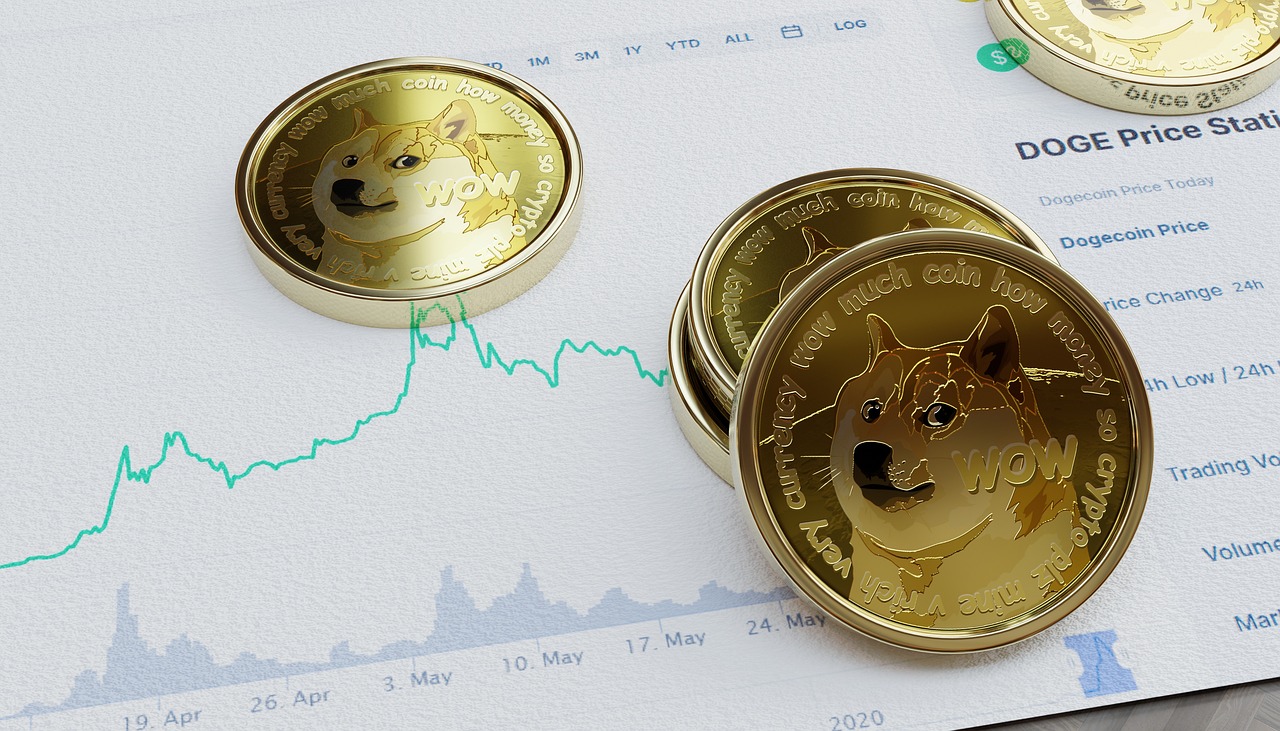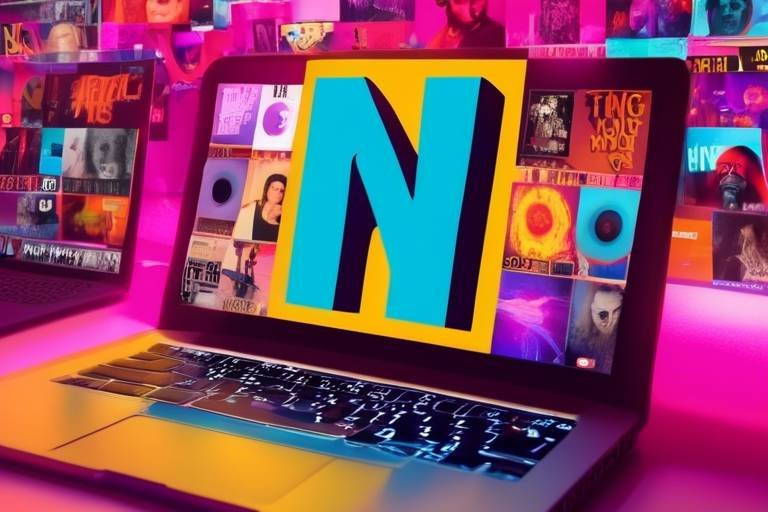How to Evaluate a Crypto Project's Team and Vision
Welcome to the wild world of cryptocurrency! If you're here, you're probably looking to dive into the depths of evaluating a crypto project's team and vision. In this fast-paced environment, making informed decisions is crucial. The right team can mean the difference between a project that soars and one that crashes. So, how do you sift through the noise and find the gems? Let’s break it down together!
When you’re considering investing in a crypto project, the first thing you want to do is look at the team behind it. Think of it like a sports team; a winning team has players with strong backgrounds and proven skills. You’ll want to analyze the professional history of each team member. What have they done before? Do they have experience in the blockchain industry? Their qualifications and past successes can give you a solid indication of how capable they are of driving the project forward.
Experience is key in the crypto space. It’s not just about the years spent in the industry, but also the relevance of that experience to the project at hand. A team that has launched successful projects before is more likely to replicate that success. So, how do you gauge this collective experience? Look for their previous roles, the challenges they faced, and how they overcame them. A well-rounded team with diverse experiences can tackle various obstacles that may arise.
Technical proficiency is the backbone of any crypto project. Without the right technical skills, even the best ideas can fall flat. It's essential to identify the technical skills required for the project and assess how well the team members match those needs. Do they have software developers who are proficient in blockchain technology? Are there experts in cybersecurity? Understanding the technical landscape is crucial, as it directly impacts the project's viability.
Not all team members contribute equally to a project’s success. Identifying key contributors—those individuals whose skills and vision drive the project—is vital. These are often the founders or lead developers who have a significant impact on the direction and execution of the project. Knowing who these people are and understanding their roles can help you gauge the project’s potential more accurately.
Have you ever heard the saying, “History repeats itself”? Well, this holds true in the crypto world as well. By examining past projects that the team has worked on, you can gain valuable insights into their capabilities. Look for the outcomes of these projects—were they successful? Did they meet their goals? This analysis can reveal a lot about the team's ability to execute and innovate.
A clear vision is fundamental for a project's success. It’s like a lighthouse guiding a ship through stormy seas. Understanding the project's goals and how they align with market needs is crucial. Are they addressing a genuine problem? Do they have a roadmap that outlines their journey? A well-defined vision not only attracts investors but also fosters community support, which is essential for long-term success.
Community support can be a strong indicator of a project's potential. A project that actively engages with its community is more likely to succeed. So, how do you assess the level of engagement? Look for active discussions on forums, social media platforms, and other community channels. The enthusiasm of the community can often reflect the project's credibility and its ability to adapt to feedback.
An active social media presence is crucial for transparency and outreach. It’s the project's way of communicating with the world. Check how often they post updates, respond to queries, and engage with their followers. A vibrant social media strategy can indicate a project that values its community and is willing to keep them informed.
Community feedback can reveal valuable insights about a project’s reception. Gathering and interpreting feedback effectively is essential. Look for reviews, comments, and discussions about the project. Positive feedback can be a good sign, but don’t ignore the criticisms; they often highlight areas for improvement. A project that listens to its community is more likely to thrive.
A well-defined roadmap is crucial for understanding a project's trajectory. It’s like a GPS for the project, showing where it started, where it is now, and where it plans to go. Reviewing the roadmap allows you to assess its feasibility in achieving the outlined goals. Are the milestones realistic? Do they align with market trends? A clear and achievable roadmap can instill confidence in potential investors.
- What should I look for in a crypto project's team? Look for relevant experience, technical skills, and a strong track record.
- How important is community engagement? Extremely important! A supportive community can significantly impact a project’s success.
- What is a roadmap, and why is it important? A roadmap outlines a project’s goals and milestones, helping investors understand its future direction.

Understanding the Team's Background
When diving into the world of cryptocurrency, one of the first things you should do is to assess the team behind the project. Why is this so crucial? Well, the team is the backbone of any crypto initiative, and their professional history can provide invaluable insights into the project's potential for success. Just like you wouldn’t buy a car without checking its engine, you shouldn’t invest in a crypto project without understanding who’s driving it.
Start by examining the qualifications of the team members. Look for their educational backgrounds, relevant certifications, and previous roles in the blockchain or tech industries. A well-rounded team often has a mix of skills, including technical expertise, marketing savvy, and financial acumen. For instance, if a project has a lead developer with a history of successful blockchain implementations, that's a promising sign! Conversely, if the team consists of individuals with little to no experience in the field, you should tread carefully.
Another important aspect to consider is the track record of the team members. Have they launched successful projects in the past? Have they contributed to reputable companies in the cryptocurrency space? This kind of background can indicate not only their capability but also their commitment to the industry. A team that has navigated the ups and downs of previous projects is more likely to handle the challenges that come with launching a new cryptocurrency.
To make this evaluation easier, consider creating a simple table to summarize your findings:
| Team Member | Role | Experience | Previous Projects |
|---|---|---|---|
| Jane Doe | Lead Developer | 5 years in blockchain | CryptoX, BlockChainPro |
| John Smith | Marketing Director | 7 years in tech marketing | TechGuru, CoinBuzz |
Moreover, don’t forget to check out their online presence. LinkedIn profiles, personal websites, or even Twitter accounts can give you a glimpse into their professional lives. Are they active in discussions about blockchain technology? Do they share insights or engage with the community? This engagement can signal their passion and dedication to the project.
In conclusion, understanding the team’s background is not just about ticking boxes; it’s about painting a picture of who is behind the project. A strong, experienced, and engaged team can significantly increase the likelihood of a project's success. So next time you come across a crypto project, take a moment to dig into the team’s history. It could save you from a costly mistake down the road.

Assessing the Team's Experience
When diving into the world of cryptocurrency, one of the most crucial factors to consider is the experience of the project’s team. Why? Because a well-experienced team can mean the difference between a successful project and one that fizzles out like a soda left open for too long. A team with a rich background in the blockchain space brings not just knowledge but also a network of contacts, industry insights, and a track record of overcoming challenges. So, how can you effectively assess a crypto project's team experience? Let's break it down.
First off, look at the collective experience of the team members. This isn’t just about how long they’ve been in the industry; it’s about the depth and relevance of that experience. For instance, if the project is focused on decentralized finance (DeFi), you’ll want to see team members who have previously worked on DeFi projects or have a solid understanding of financial systems. This kind of expertise can significantly enhance the project's credibility and potential for success.
Next, consider the diversity of experience within the team. A well-rounded team that includes experts in various fields—such as marketing, technology, and finance—can tackle challenges from multiple angles. For example, a project might have a brilliant coder but lacks a marketing strategist; without effective marketing, even the best technology might go unnoticed. Therefore, assess whether the team has a healthy mix of skills that align with the project's objectives.
Another aspect to evaluate is the track record of the team members. Have they launched successful projects in the past? What were the outcomes? Understanding their previous endeavors can provide valuable insights into their capabilities. For instance, if a team member was part of a project that achieved significant milestones or garnered a large user base, it’s a good indicator of their ability to drive a project forward. You can create a simple table to summarize their past projects and outcomes:
| Team Member | Past Project | Outcome |
|---|---|---|
| Jane Doe | CryptoWallet | Successfully raised $5M in funding |
| John Smith | BlockTrade | Launched with 10K active users in the first month |
| Alice Johnson | DeFi Lending | Achieved a 90% customer satisfaction rate |
Lastly, don’t forget to check for industry recognition. Has the team received any awards or been featured in reputable publications? Recognition from industry peers can be a strong indicator of a team's credibility and expertise. It can also reflect their commitment to innovation and excellence within the crypto space.
In conclusion, assessing a crypto project's team experience involves more than just looking at resumes. It’s about understanding the collective knowledge, past successes, and the diversity of skills that the team brings to the table. By taking the time to evaluate these factors, you can make a more informed decision about whether to invest your hard-earned money into a particular project. After all, investing in crypto is as much about the team as it is about the technology!
- What should I look for in a crypto project's team? Focus on their experience, past successes, and the diversity of their skills.
- How important is industry recognition? Very important! It reflects credibility and expertise.
- Can I find team information on their website? Yes, most reputable projects provide detailed information about their team members.

Evaluating Technical Skills
When diving into the world of cryptocurrency projects, one of the most critical aspects to consider is the technical skills of the team behind it. You see, in the fast-paced and ever-evolving realm of blockchain technology, having a team that possesses the right technical expertise can be the difference between a project that thrives and one that flounders. But how do you evaluate these skills effectively? Let’s break it down.
First and foremost, it’s essential to identify the specific technical competencies that are relevant to the project. For instance, if the project focuses on developing decentralized applications (dApps), you’ll want to look for team members who have experience with programming languages such as Solidity or JavaScript, as well as familiarity with frameworks like Ethereum or React. On the other hand, if the project is centered around creating a new blockchain protocol, expertise in consensus algorithms and cryptographic methods becomes paramount.
To assess the team's technical skills, consider the following aspects:
- Educational Background: Check if team members have formal education or certifications in computer science, software engineering, or related fields. This can often provide a solid foundation for their technical prowess.
- Professional Experience: Look into their previous roles. Have they worked on high-profile projects? Were they involved in successful launches? A rich history of relevant experience can be a strong indicator of capability.
- Open Source Contributions: Many skilled developers contribute to open-source projects. Reviewing their contributions can give you insights into their coding skills and collaborative abilities.
Another effective way to evaluate technical skills is by examining the team's GitHub profile. This platform is a treasure trove of information where you can see the code they’ve written, the projects they’ve contributed to, and the overall activity level. A vibrant GitHub presence often signifies a passionate and engaged team, which is a good sign for any investor.
Moreover, consider reaching out to the team directly or participating in community forums where they engage. Ask questions about their technology stack or the challenges they’ve faced in development. Their responses can provide valuable insights into their depth of knowledge and problem-solving abilities. Remember, a team that communicates effectively about technical matters is likely to handle project challenges more adeptly.
Lastly, don’t underestimate the importance of team dynamics. A project might have individual members with stellar technical skills, but if they can’t work well together, the project could struggle. Look for indications of teamwork, collaboration, and a shared vision among the technical staff. This synergy can often lead to innovative solutions and a more robust project overall.
In conclusion, evaluating the technical skills of a crypto project’s team is a multifaceted process. By looking at their educational background, professional experience, contributions to open source, and overall team dynamics, you can gain a comprehensive understanding of their capabilities. Remember, in the world of cryptocurrency, a strong technical foundation is not just beneficial; it’s essential for success.
- What are the key technical skills to look for in a crypto project team?
Look for programming languages relevant to the project, experience with blockchain protocols, and knowledge of security practices. - How can I assess the team's past projects?
Research their previous work, check their GitHub contributions, and look for case studies or project reports. - Is it important for the team to have formal education?
While formal education can be beneficial, practical experience and proven skills often carry more weight in the tech industry.

Identifying Key Contributors
When diving into the world of cryptocurrency projects, one of the most critical aspects to consider is the team behind it. Just like a movie's success often hinges on its director and lead actors, a crypto project's trajectory is significantly influenced by its key contributors. These are the individuals who bring their unique skills, experiences, and visions to the table, driving the project forward. But how do you go about identifying these pivotal players?
First, start by examining the project's official website and whitepaper. Most reputable projects will highlight their core team members, often accompanied by brief biographies that detail their backgrounds and roles. Look for individuals with a track record in the blockchain industry or related fields. For instance, if a team member previously led a successful startup or contributed to a well-known blockchain protocol, that’s a strong indicator of their capability.
Next, consider the diversity of skills within the team. In a successful project, you'll often find a blend of technical experts, marketing professionals, and community managers. This diversity ensures that the project is not only technologically sound but also well-positioned in the market. For example, a project might have:
- Blockchain Developers: Responsible for the technical aspects of the project.
- Marketing Strategists: Focused on promoting the project and engaging the community.
- Advisors: Often experienced figures in the crypto space who provide guidance.
Another effective method to identify key contributors is through social media platforms, particularly LinkedIn and Twitter. These platforms can offer insights into the professional networks of the team members and their level of engagement with the broader crypto community. Check for endorsements, recommendations, and the frequency of their interactions. A highly engaged contributor who actively shares updates and participates in discussions can indicate a strong commitment to the project.
Furthermore, don't overlook the importance of community recognition. Often, community members will mention or praise specific contributors during discussions on forums like Reddit or Telegram. Pay attention to who the community looks up to, as these individuals often play a crucial role in driving the project's vision and execution.
Lastly, consider the project’s transparency regarding its team. Projects that openly share information about their contributors, including updates on their roles and contributions, tend to foster trust. Transparency not only builds credibility but also allows potential investors to feel more secure in their decision-making process. Always be cautious of projects that provide little to no information about their team members, as this could be a red flag.
In conclusion, identifying key contributors is an essential step in evaluating a cryptocurrency project. By thoroughly researching the team's backgrounds, skills, and community interactions, you can gain valuable insights into the project's potential for success. Remember, a strong team can be the backbone of a promising crypto endeavor, so take the time to dig deep and understand who is steering the ship.

Analyzing Past Projects
When it comes to evaluating a cryptocurrency project, one of the most revealing aspects is the team's history with past projects. Think of this as looking into a crystal ball; the past can often provide valuable insights into the potential future of the project. A team that has successfully launched and managed previous projects typically brings a wealth of experience and knowledge to the table, which can significantly enhance the credibility of their current endeavor.
To effectively analyze past projects, you should first consider the outcomes of those ventures. Did they achieve their goals? Were they able to deliver on promises made to their stakeholders? For instance, if a team previously launched a token that skyrocketed in value, it may indicate their ability to create valuable products in the crypto space. On the other hand, if their past projects were riddled with failures or controversies, it could be a red flag.
Furthermore, it’s essential to investigate the nature of these past projects. Were they similar to the current project in terms of technology, target audience, or market needs? A team that has experience in launching decentralized finance (DeFi) projects, for example, is likely to have insights that could be beneficial for another DeFi initiative. Conversely, a team that has primarily worked on unrelated projects may lack the specific expertise necessary to navigate the challenges of the current market.
Another key aspect to consider is the team members’ roles in those past projects. Did they hold leadership positions, or were they more junior contributors? Understanding who did what can help you gauge their level of responsibility and accountability. For instance, a project led by a former CTO of a successful blockchain company carries more weight than one managed by a less experienced individual. It’s also worthwhile to research any accolades or recognition they may have received in their previous roles.
Additionally, you should look into the community's reception of these past projects. Community sentiment can often be a strong indicator of a project's quality and the team's capability. Were there active discussions on forums like Reddit or Twitter? Did the community feel supported and engaged? A project that fostered a loyal and enthusiastic community is likely to have a team that knows how to build relationships and maintain transparency.
In summary, analyzing past projects is not just about looking at numbers and outcomes; it's about understanding the context and narrative behind those projects. By diving deep into the team's history, roles, and community interactions, you can gain a clearer picture of their potential to deliver on their current promises. Remember, a team with a solid track record is often a strong indicator of future success in the unpredictable world of cryptocurrency.
- What should I look for in a crypto project's past projects?
Focus on the outcomes, the relevance of past projects to the current initiative, and the roles team members played. - How can community feedback influence my investment decision?
Community sentiment can provide insights into the project's reputation and the team's ability to engage with their audience. - Is it enough to just look at past successes?
While past successes are important, consider the broader context, including the challenges faced and how the team responded to them.

Understanding the Vision and Goals
When diving into the world of cryptocurrency, one of the most critical factors to consider is the project's vision and goals. A clear vision acts as the lighthouse guiding the ship through the stormy seas of the crypto landscape. Without it, projects can easily drift off course, leading to confusion and potential failure. So, how do we unravel this complex tapestry of aspirations and objectives?
First and foremost, you need to ask yourself: what is the project's mission? Does it aim to solve a specific problem within the blockchain ecosystem, or is it more of a speculative venture? Understanding the core mission can help you gauge whether the project aligns with your investment philosophy. For instance, a project focused on enhancing privacy in transactions may attract those who prioritize anonymity, while a project aimed at improving supply chain transparency might appeal to those interested in sustainability.
Moreover, it's essential to evaluate how the project's goals align with current market needs. The crypto space is constantly evolving, and what might have been groundbreaking a year ago could be outdated today. A project that has its finger on the pulse of market trends is more likely to succeed. Look for projects that have conducted thorough market research and identified gaps that they intend to fill. This proactive approach not only demonstrates foresight but also a commitment to creating real-world value.
Another critical aspect is the measurability of these goals. Are the project's objectives clearly defined with specific milestones? A well-structured roadmap often includes quantifiable targets that can be tracked over time. This not only instills confidence in potential investors but also holds the team accountable for their progress. For example, if a project aims to achieve a certain number of users or partnerships within a specified timeframe, it provides a tangible way to measure success.
To further enhance your understanding of the project's vision and goals, consider engaging with the community. Community sentiment can provide invaluable insights into how well the project's objectives resonate with its supporters. Are they enthusiastic about the vision? Do they believe in the feasibility of the goals? You can often find discussions on platforms like Reddit, Twitter, and dedicated crypto forums where community members share their thoughts and experiences.
In summary, understanding a crypto project's vision and goals is not just about reading the white paper; it's about diving deep into the ethos of the project. By analyzing the mission, market alignment, measurability, and community engagement, you can better assess whether a project is worth your investment. Remember, in the world of crypto, clarity of purpose can be the difference between a fleeting trend and a lasting legacy.
- What should I look for in a crypto project's vision?
Look for clarity, alignment with market needs, and a commitment to solving real-world problems.
- How can I assess the feasibility of a project's goals?
Check if the goals are measurable and if the roadmap outlines specific milestones.
- Why is community engagement important?
A strong community can provide support, feedback, and validation for the project's vision and goals.

Evaluating Community Engagement
When diving into the world of cryptocurrency, one of the most telling indicators of a project's potential is its community engagement. A thriving community can serve as a backbone for a crypto project, providing support, feedback, and even driving the project's growth through word-of-mouth. But how do you gauge the level of engagement within a community? It’s not just about the number of followers or the frequency of posts; it’s about the quality of interactions and the overall enthusiasm surrounding the project.
First and foremost, consider the activity levels on various platforms. Are the project's social media accounts buzzing with discussions and updates? Platforms like Twitter, Telegram, and Discord can give you a real-time glimpse into how actively the community participates. Look for:
- Frequency of Posts: How often does the team communicate with the community? Regular updates can indicate a proactive approach.
- Engagement Rates: Are followers liking, sharing, and commenting on posts? High engagement suggests an invested audience.
- Community Events: Does the project host AMAs (Ask Me Anything) or webinars? Events like these foster direct communication and build trust.
Moreover, the sentiment within the community can be just as critical. Are the discussions positive and constructive, or do they lean towards negativity and skepticism? Platforms like Reddit can offer insights into community sentiment through discussions and threads. A healthy community should exhibit a mix of excitement and constructive criticism, which can indicate a balanced approach to feedback.
Another key aspect to evaluate is the community's involvement in decision-making. Projects that prioritize their community often implement governance models where token holders can vote on significant decisions. This not only empowers the community but also fosters loyalty. If you notice that the community has a say in the project's direction, it’s a good sign that they are genuinely engaged and invested in its success.
Lastly, consider the feedback mechanisms in place. How does the project handle community suggestions and concerns? A responsive team that actively listens to its community can build a strong rapport and trust. Look for:
- Feedback Channels: Are there dedicated channels for community suggestions? This can include forums or social media threads.
- Response Time: How quickly does the team respond to questions or concerns? Timeliness can reflect the team's commitment to their community.
In summary, evaluating community engagement is about more than just numbers—it's about understanding the quality of interactions, the sentiment of discussions, and the level of involvement in the project's direction. A well-engaged community can not only enhance a project's credibility but also drive its growth in the competitive crypto landscape.
Q1: Why is community engagement important for a crypto project?
A1: Community engagement is crucial as it indicates the level of support and interest in the project. A strong community can drive adoption, provide valuable feedback, and help in marketing through word-of-mouth.
Q2: How can I assess the quality of community engagement?
A2: Look for active discussions, engagement rates on social media, community events, and the sentiment of conversations. Additionally, assess how involved the community is in decision-making processes.
Q3: What platforms should I check for community engagement?
A3: Key platforms include Twitter, Telegram, Discord, and Reddit. Each platform offers different insights into community dynamics and engagement levels.
Q4: How does a responsive team affect community engagement?
A4: A responsive team fosters trust and loyalty within the community. When team members actively listen and respond to feedback, it encourages more open communication and collaboration.

Measuring Social Media Presence
In today's digital age, a project's social media presence is more than just a platform for announcements; it is a lifeline connecting the team to its community. An active social media presence can indicate a project's transparency, engagement, and overall health. So, how do we measure this crucial aspect? First, it's essential to look at the platforms the project is utilizing. Are they active on Twitter, Reddit, Telegram, or Discord? Each platform serves a unique purpose and attracts different audiences, so a diversified approach is often beneficial.
Next, consider the frequency and quality of their posts. Are they sharing regular updates about the project's progress, or do they go silent for weeks on end? Consistency is key; a project that communicates regularly is likely to foster a loyal community. Moreover, the quality of content matters just as much. Posts that are informative, engaging, and visually appealing can generate more buzz and interaction. Look for posts that include educational content, such as tutorials, FAQs, or market analyses, as these can establish the team as thought leaders in the space.
Another critical factor is engagement metrics. This includes likes, shares, comments, and retweets. High engagement rates often indicate a passionate community. For example, a project might have a modest number of followers, but if their posts consistently receive high engagement, this is a positive sign. You can use tools like Hootsuite or Sprout Social to analyze these metrics more comprehensively. Here’s a simple breakdown of what to look for:
| Metric | What It Indicates |
|---|---|
| Follower Count | Size of the community |
| Post Frequency | Consistency and commitment |
| Engagement Rate | Community interest and loyalty |
| Content Quality | Professionalism and value offered |
Lastly, don't overlook the sentiment of the comments and feedback from the community. Are people excited and supportive, or are there complaints and negativity? Positive sentiment can be a strong indicator of a project's potential success. By taking the time to analyze these various elements, you can get a clearer picture of a project's social media presence and its overall viability in the ever-evolving crypto landscape.
- Why is social media presence important for crypto projects? A strong social media presence helps build community trust and keeps investors informed about developments.
- What platforms should crypto projects focus on? Popular platforms include Twitter, Reddit, Telegram, and Discord, each serving different audience needs.
- How can I measure engagement on social media? Look at likes, shares, comments, and retweets to evaluate how well the community interacts with the project.
- What does high engagement indicate? It often indicates a passionate and loyal community, which can be beneficial for the project's success.

Assessing Community Feedback
When diving into the world of cryptocurrency, one cannot underestimate the power of community feedback. This feedback acts as a compass, guiding potential investors and users toward understanding the project's reception in the real world. But how do we effectively gather and interpret this feedback? It starts with creating a robust strategy for engagement and analysis.
First and foremost, it’s essential to monitor various platforms where community discussions take place. This includes social media channels like Twitter, Reddit, and Telegram, as well as specialized forums like Bitcointalk. Each platform offers a unique lens through which you can assess community sentiment. For instance, Twitter might give you a snapshot of real-time reactions, while Reddit can provide in-depth discussions and critiques.
Once you've gathered feedback from these sources, the next step is to categorize it. This can be done by focusing on key themes that emerge from the conversations. Some common themes to look out for include:
- Trustworthiness: Are users expressing confidence in the team and the project?
- Usability: How user-friendly do participants find the platform or service?
- Innovation: Is the project perceived as cutting-edge or lagging behind competitors?
- Community Support: Is there a strong sense of camaraderie among users?
Moreover, it’s vital to gauge the tone of the feedback. Are discussions primarily positive, or is there a wave of negativity? Tools like sentiment analysis can help in quantifying this sentiment, allowing you to see the bigger picture. However, it’s crucial to remember that sentiment can be nuanced; a project may receive mixed reviews that still indicate potential for growth.
Another effective way to assess community feedback is through surveys and polls. Engaging directly with the community by asking targeted questions can yield valuable insights. For example, you might ask:
- What features do you value most in this project?
- What improvements would you like to see?
- How likely are you to recommend this project to others?
By analyzing the responses, you can identify trends and areas for improvement. Additionally, consider creating a feedback loop where you not only gather opinions but also communicate back to the community about how their feedback is being used to make improvements. This not only builds trust but also fosters a sense of ownership among community members.
Lastly, remember that community feedback is not static; it evolves as the project develops. Regularly revisiting and reassessing community sentiment ensures that you stay in tune with the project's health and its reception. By prioritizing community feedback, you can make informed decisions that align with the project's vision and goals, ultimately leading to a more successful investment.
- How do I find community feedback on a crypto project?
Look for discussions on social media platforms, forums, and dedicated cryptocurrency websites. Engaging with these communities can provide a wealth of information. - What should I do if the community feedback is mostly negative?
Analyze the reasons behind the negativity. It could be an opportunity for the project to address concerns and improve, or it may indicate deeper issues. - Can I trust community feedback?
While community feedback can be insightful, it's essential to consider it alongside other factors such as the team's background and the project's roadmap.

Reviewing the Project's Roadmap
When diving into the world of cryptocurrency, one of the most crucial elements you'll encounter is the project's roadmap. Think of it as a treasure map that guides you through the often-treacherous waters of the crypto landscape. A well-defined roadmap lays out the project's journey, detailing its objectives, timelines, and the milestones it aims to achieve. But how do you effectively review a project's roadmap to ensure it aligns with your investment goals?
First and foremost, take a close look at the clarity of the roadmap. Is it easy to understand? A good roadmap should be straightforward, detailing what the project intends to accomplish and when. If you find yourself scratching your head, that's a red flag. You want to invest in projects that communicate their vision clearly, so you can gauge whether they are on track.
Next, consider the realism of the proposed timelines. Projects often set ambitious goals, but it's essential to discern whether these timelines are feasible. For instance, if a project claims it will launch a complex feature in just a month, but similar projects took years, you might want to proceed with caution. A realistic roadmap should have achievable milestones that reflect the team's capabilities and the challenges they might face.
Moreover, examine the flexibility of the roadmap. The crypto landscape is incredibly dynamic, and adaptability is key. A good project will not only set goals but also be willing to adjust its plans based on market feedback and technological advancements. Look for indications that the team is open to revising their roadmap in response to unforeseen circumstances. This adaptability can be a significant indicator of the team's ability to navigate the unpredictable waters of the crypto world.
Another essential aspect is the community involvement in the roadmap's development. A project that actively seeks input from its community shows a commitment to transparency and collaboration. Check if the roadmap has been updated based on community feedback or if there are opportunities for community members to contribute ideas. This level of engagement can enhance a project's credibility and foster a loyal following.
Finally, don't forget to analyze the milestones achieved so far. A project that has successfully completed previous milestones demonstrates its ability to execute plans. Look for a detailed history of past achievements and whether the team has met their deadlines. This track record can provide valuable insights into the team's reliability and the project's overall potential.
To summarize, when reviewing a crypto project's roadmap, keep an eye out for:
- Clarity: Is the roadmap easy to understand?
- Realism: Are the timelines achievable?
- Flexibility: Is the project adaptable to change?
- Community Involvement: Is the community engaged in the roadmap's development?
- Milestones Achieved: Has the project met its previous goals?
By carefully evaluating these aspects, you can gain a comprehensive understanding of a project's potential and make informed decisions about your investments in the ever-evolving crypto landscape.
Q1: What is a crypto project's roadmap?
A roadmap is a strategic plan that outlines a project's goals, timelines, and milestones, providing a clear direction for its development.
Q2: Why is it important to review a project's roadmap?
Reviewing a roadmap helps investors assess the project's viability, understand its goals, and determine whether it aligns with their investment strategy.
Q3: What should I look for in a roadmap?
Look for clarity, realism in timelines, flexibility, community involvement, and a history of achieved milestones to gauge the project's potential.
Q4: How can community involvement impact a project's roadmap?
Community involvement can enhance a project's credibility and foster loyalty, indicating that the team values feedback and collaboration.
Frequently Asked Questions
- How important is the team's background in a crypto project?
The team's background is crucial in assessing a crypto project. A strong professional history and relevant expertise can indicate the team's capability to navigate the complexities of the crypto landscape. Investors should look for team members with experience in blockchain technology, finance, and successful project management.
- What specific experience should I look for in a crypto project's team?
When evaluating a crypto project's team, focus on their collective experience in the industry. Look for previous projects they have worked on, particularly those that have achieved success or recognition. Experience in roles that directly relate to the project's goals, such as development, marketing, or community management, is particularly valuable.
- Why are technical skills important in a crypto project?
Technical skills are vital because they determine the team's ability to develop and maintain the project's underlying technology. Proficiency in programming languages, blockchain protocols, and cybersecurity can significantly impact the project's success and security. Assessing the team's technical capabilities helps investors gauge the project's feasibility.
- How can I identify key contributors to a crypto project?
To identify key contributors, review the project's team structure and look for individuals who hold significant roles, such as the project lead, developers, and advisors. Analyzing their past contributions and successes can provide insight into their impact on the project's direction and success.
- What should I consider when analyzing past projects of the team?
When analyzing past projects, consider the outcomes and the team's roles in those projects. Look for metrics such as user adoption, funding success, and overall impact on the industry. Understanding how previous projects fared can provide valuable insights into the team's capability and potential for future success.
- How important is a clear vision for a crypto project?
A clear vision is fundamental for a project's success as it guides the team's efforts and aligns them with market needs. Investors should look for well-defined goals that demonstrate the project's potential to solve real-world problems or meet market demands.
- How can I evaluate community engagement for a crypto project?
To evaluate community engagement, monitor social media channels, forums, and community discussions. Look for active participation, enthusiasm, and feedback from community members. A strong, engaged community can indicate a project's viability and potential for growth.
- What role does social media presence play in a crypto project?
An active social media presence reflects a project's transparency and outreach. It allows the team to communicate updates, gather feedback, and build a community. Assessing engagement levels, follower counts, and interaction quality can provide insights into the project's popularity and trustworthiness.
- How can community feedback influence my investment decision?
Community feedback can reveal valuable insights about a project's reception, strengths, and weaknesses. Pay attention to common concerns or praises from community members, as they can help you make informed decisions about the project's potential and reliability.
- Why is reviewing a project's roadmap important?
Reviewing a project's roadmap is essential for understanding its planned trajectory and milestones. A well-defined roadmap demonstrates the team's strategic planning and commitment to achieving their goals. Checking the feasibility of these goals can help investors assess the project's long-term viability.



















